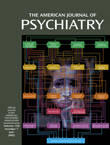Psychiatric Comorbidity, Family Dysfunction, and Social Impairment in Referred Youth With Oppositional Defiant Disorder
Abstract
OBJECTIVE: The authors sought to achieve an improved understanding of the diagnosis of oppositional defiant disorder independent of its association with conduct disorder. METHOD: Family interactions, social functioning, and psychiatric comorbidity were compared in clinically referred male and female subjects with oppositional defiant disorder alone (N=643) or with comorbid conduct disorder (N=262) and a psychiatric comparison group with neither oppositional defiant disorder nor conduct disorder (N=695). RESULTS: Oppositional defiant disorder youth with or without conduct disorder were found to have significantly higher rates of comorbid psychiatric disorders and significantly greater family and social dysfunction relative to psychiatric comparison subjects. Differences between subjects with oppositional defiant disorder alone and those with comorbid conduct disorder were seen primarily in rates of mood disorders and social impairment. Oppositional defiant disorder was a significant correlate of adverse family and social outcomes when comorbid disorders (including conduct disorder) were controlled. CONCLUSIONS: These results support the validity of the oppositional defiant disorder diagnosis as a meaningful clinical entity independent of conduct disorder and highlight the extremely detrimental effects of oppositional defiant disorder on multiple domains of functioning in children and adolescents.



